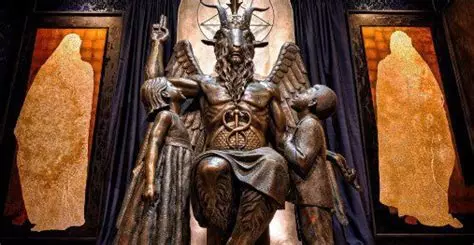In a theatrical yet ominous escalation of domestic repression, Russia’s Supreme Court issued a ruling on July 23, 2025 banning the so‑called “International Satanist Movement”, an entity that does not exist. Presented as an extremist ideology purportedly tied to “neo‑Nazism” and “religious hatred,” the decree serves less justice than it does state-sponsored symbolism. It echoes similar measures taken in 2023 when another entirely fabricated group, the so‑called “International LGBT Movement,” was outlawed. Meanwhile, the Kremlin and the Orthodox Church amplify the threat it poses, real or otherwise, as a pretext for intensifying internal control.
A Manufactured Threat for Domestic Control
The lack of evidence of any coherent satanist organization in Russia has not deterred authorities. According to human rights monitors like Department One and independent journalists, the decision is emblematic of a judicial process designed to define enemies of the state, whether they exist or not. As Sergueï Katsuba, an expert on authoritarian regimes, notes, this development is part of a continual effort to broaden the scope of what is deemed “extremism,” conflating nonexistent organizations with real repression tools.
Church and State: Allies in the Moral Crusade
Patriarch Kirill of the Russian Orthodox Church publicly endorsed the ban as early as January 2025, entangling state and church narratives by portraying satanism as an existential threat to traditional Christian values and Russian identity. Senior MP Andrei Kartapolov further escalated the rhetoric in April, labeling satanism a form of “Western warfare” aimed at undermining Russian sovereignty and morality. These moves resemble earlier efforts where LGBT activism, neo-paganism, and youth subcultures were recast as moral threats to the nation.
Parallels with Previous Campaigns, and Real Victims
This judicial witch hunt follows the same logic deployed against the 2023 ban on the “International LGBT Movement,” another nonexistent group that nonetheless became a tool to criminalize dissent, LGBTQ+ identities, and queer visibility in Russia. The result? Broad and vague definitions that allow retroactive prosecuting: fans of heavy metal, goth, or occult imagery could now find themselves facing up to eight years of prison for “affiliation”, even for old social media posts or symbolic tattoos.
Satanism as Ideological Warfare in the Ukraine Conflict
The symbolic demonization has extended beyond internal repression. Russian state media regularly ties Ukraine and the West to satanism and occult rituals, portraying its war in Ukraine as a spiritual battle against Western evil. In this framework, Ukraine is not only politically but morally corrupt, reinforcing the Kremlin’s narrative of defending true Russian-Christian civilization against foreign subversion.
Legal Ambiguity and Totalitarian Utility
The ruling’s vagueness is intentional. Without a formal definition of “satanism,” authorities gain maximum flexibility. As Stephen Hall and Jenny Mathers warn, almost anyone can be accused or “discovered” as a member of the phantom movement, with little room for legal recourse, particularly because dissenters cannot challenge bans on groups that never existed. This legal ambiguity is a hallmark of authoritarian governance, designed to instill fear and force conformity.
Broader Context: A Legislative Minefield
Human Rights Watch and other observers characterize Russia’s post-2020 legal landscape as a legislative minefield targeting civil society at large. The satanist ban fits within a broader strategy: “foreign agents,” protest organizers, creators of “unapproved beliefs,” and real or imagined subcultures are swept into a network of repression justified under nebulous extremism legislation.
Conclusion
Publicly, Russia presents the ban as a fight for moral clarity; privately, it deepens state control under the guise of ideological necessity. The hypothetical satanist threat becomes a justification for political policing, both to intimidate citizens and to signal Russia’s self-crafted role as guardian of spiritual purity. As with the fictional LGBT movement, real victims emerge: artists, activists, and ordinary citizens arbitrarily targeted by laws that criminalize thought, imagery, or association.



